



 |
 |
 |
 |
In the year 2000, while researching the inventory of Rudolf's Kunstkammer published in 1976 by Rotraud Bauer and Herbert Haupt (1), I noticed the following entry, which was the only one that might suggest a reference to the Voynich MS:
In folio: ein philosophisch alt geschriben buch mit figurn und ein copey uff pergamen geschriben vom
Mathes Dörrer, ungebunden, welchs nit gantz beysamen und Herr Hayden auf bevelch I. Mt: etliche bletter
davon genommen
(English: in folio: a philosophical, old, handwritten book with drawings and a copy on parchment by Mathes Dörrer, not bound, not completely collated and of which Ms Hayden removed some leaves on order of his majesty.)
This was a highly tentative and speculative identification, and it was also presented as such in Zandbergen (2012) (2) and published in Zandbergen and Prinke (2016) (3). In particular, the reference to a copy on parchment made during Rudolf's reign is not easy to understand in the frame of what we know about the Voynich MS.
In April 2018 I was doing more general research about the books acquired by Rudolf II. While re-reading R.J.W. Evans' "Rudolf II and his world" (4), the following passage on p.198 caught my attention, not because of any relation with the Voynich MS, but out of a general interest:
[...] he ordered a copy to be made of the Liber de laudibus sanctae crucis by Hrabanus Maurus from the Fulda manuscript, and his interest in the remarkable Codex Giganteus - a vast scriptural, chronological and scientific compliation - led him to secure it for his collection. Both these works were borrowed from Monasteries and seem (characteristically) never to have been returned. The same is true of a third manuscript, the most precious among all those acquired by the Emperor, the so-called Codex Argenteus which contained Bishop Ulfilas's Gothic translation of the Gospels.
Footnote 2 on the same page refers to a publication about the Fulda MS (5) by J. von Schlosser, and further indicated that this Liber de Laudibusis is full of number mysticism and other symbolism. I decided to find out more about this MS, using the reference provided by Evans.
The article by von Schlosser written in 1892 describes the Hrabanus Maurus MS based on a copy preserved in the Vienna Hofbibliothek: Codex 652. It discusses the dedication of the MS to Otgar, archbishop of Mainz, which includes two illustrations, and it further highlights the illustrations and the clever arrangement of the text in diagrams, which, though highly interesting, I will not go into any further. The author further explains that several copies of this MS were created in the 9th century, while Hrabanus Maurus was in Fulda. He also mentions the Codex reginae Chistinae 124 of the Vatican library, and Codices 911 and 908, also of the Hofbibliothek.
He then turns to the fact that another copy of the MS was made at the start of the 17th century. The archive of Fulda has a letter from Rudolf II to Johann von Westernach, secretary to Herzog Ernst, written on 15 June 1598. The letter requests the delivery on loan to Prague of the Hrabanus Maurus MS. A confirmation of reception of the MS dated 4 August 1598 is still preserved in the archives in Vienna:
Recipisse an den von Westernach pro überschickt buech Rabani Mauri.
Rudolff etc. Ersamer lieber andechtiger. Wir haben das begerte alte geschribne buech Rabani Mauri aus dem stift Fulda, so du uns zuwegenbracht und zukommen lassen, wol empfangen und gern gesehen. [...]
(English: receipt for the book of Rabanus Maurus sent by von Westernach.
Rudolf (etc). to most honourable reader. We have well received, and appreciate the desired old, handwritten book of
Rabanus Maurus from the convent of Fulda, that you have sent and delivered to us.)
The author then indicates that the MS seems never to have been returned, and in fact appears to have been lost, clarifying that the three codices in the Hofbibliothek that were mentioned in the article cannot be this original, for several different reasons.
The copy made for Rudolf, however, came into the hands of the Marquis d'Argenson, and ended with the rest of his collection in the Paris Bibliothèque de l'Arsenal where it is now preserved as MS Nr. 472. It is a parchment MS in folio, and according to the author it is in a mutilated state (6). It includes the arms of the emperor, and a dedication to him on fols. 94 and 95. The date of its creation is given as 1600, and reference is made to a catalogue of the Bibliothèque de l'Arsenal of 1885 (7).
Fortunately, a copy of the 1885 catalogue is available on-line (see note 7), and provides additional useful information about MS 472. The MS was created in 1600 for Rudolf II. It starts with the dedication to Otgar. From fol.3v onwards, the illustrations and the text follow the order of a printed copy from Augsburg, 1605 (8), with only one difference, which may be left outside of the present discussion. Fols. 94 and 95 have a dedication to Rudolf II and the date 1600. It is signed as follows (9):
Eiusdem Ma[ies]t[a]tis V[est]rae Sacr[issi]mae
Ser[vu]s humilli[ssi]mi
etc
G.M.D.Z.
Ungari
The MS description says: parchment, 95 folios, 350 x 298 mm, writing in imitation of a 16th century print (1600). 31 coloured figures. Some summary descriptions of the illustrations and text in gold and silver are provided. On the insides of the covers pieces of leather are attached, which have the arms of Rudolf II. These are assumed to originate from the original cover of the book. This seems to be the only evidence of the "mutilation" that was mentioned by von Schlosser.
Additionally, the MS has been digitised and can be browed on-line in its entirety via >>this link to Arsenal MS 472.
While the original MS from Fulda was considered lost by von Schlosser (see note 5), we obtain more insight from a more recent publication about the De Laudibus manuscripts, namely a paper published in 1989 by Michel Perrin (10). This paper concentrates on ten original manuscripts, including two that were already mentioned above, namely Vienna Codex 652 and Vatican Reginensis Lat. 124.
From p.202 onwards the author summarises previous work by other authors who are cited, which leads to the conclusion that Reg.Lat.124 is indeed the copy that was borrowed from Fulda by Rudolf II, and was the original used to derive Paris Arsenal 472. This is clearly confirmed in the paper by noting very specific variations of the text that are only common to these two manuscripts.
That this original ended up in the Vatican Reginensis collection is a completely sensible consequence of events. The other two manuscripts that were mentioned in the introdction, namely the Codex Gigas (as it is now more commonly known) and the Codex Argenteus, were both part of the Swedish war booty in 1648 and taken from Prague to Sweden, where they ended up in the library of Queen Christina. The same seems to have happened with this MS. The queen then apparently decided to take it with her when she left Sweden for Rome.
Fortunately, also MS Vat.Reg.Lat.124 has been digitised and can be browsed on-line in its entirety via >>this link to Vatican MS Reg.Lat 124.
It may be of interest to put a few of the illustrations from the original and the copy side by side. To avoid violation of copyrights, I only show small miniatures of the illustrations, with links to the original hosting sites of the digital images.
| Illustration | Reg.Lat.124 | Arsenal 472 |
|---|---|---|
| Dedication | 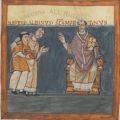 |
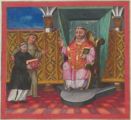 |
| magic square | 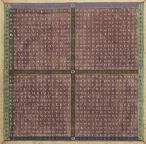 |
 |
| angels | 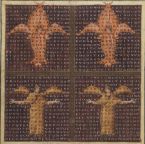 |
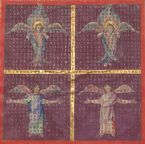 |
| dendrogram | 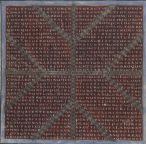 |
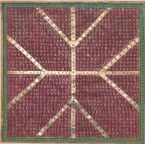 |
Finally, we may assess whether the entry in the Kunstkammer inventory really refers to these two books, by analysing each part of the description in a table.
| Text fragment | Analysis |
|---|---|
| In folio: | The copy is described as 'in folio' in the catalogue, and its size is 350 x 298 mm. The size of Reg.Lat.124 is listed by Perrin as 365 x 295 mm. |
| ein philosophisch alt geschriben buch mit figurn | It is of interest that the catalogue entry repeats the wording of the receipt of Rudolf: "das begerte alte geschribne buech". It clearly has numerous very conspicuous illustrations. |
| und ein copey uff pergamen | The copy is on parchment, as is of course also the original |
| geschriben vom Mathes Dörrer, | The copy has been hand-written, and the author signature G.M.D.Z. includes at least M.D. In that case 'Z' could be the first letter of his town of origin in Hungary. This is not conclusive but at least it is not contradictory. |
| ungebunden, welchs nit gantz beysamen | This remains uncertain. It would only make sense for this to refer to the original, but this can no longer be confirmed. It makes no difference to the identification either way. |
| und Herr Hayden au bevelch I. Mt: etliche bletter davon genommen | Especially here it is uncertain if this refers to the original, the copy, or both. The two books could be compared in detail. The only point possibly in favour is that the Vatican manuscript seems to have at least three gaps between the folios. |
Overall, the result clearly has to be considered positive. The final confirmation would come if the artist who produced the copy could be identified. This is made difficult by the great variety in spelling of names at the time, so Dörrer could well be Dorer, Derrer or Dürer, to name a few.
Von Schlosser (see note 5) indicates that in the 1600 copy for Rudolf the illustrations and the text follow the order of a printed copy that was printed by Hans Schultes in Augsburg in 1605. This book is described as an exact copy of the editio princeps which was printed by Thomas Anshelm in Pforzheim in March 1503 (see note 8). Since he also had access to Reg.Lat.124, the suggestion is that the order in that MS is not the same, even while he did not realise that this was the original from which Arsenal 472 was copied.
Perrin (see note 9) also writes that the writing of Arsenal 472 seems to imitate the edition of Wimpfeling (1501-1503). The latter was one of the authors of the edition of Anshelm. It seems inevitable that a copy of this editio princeps was available to Rudolf in Prague, and used by the copyist of the MS. There are on-line copies available both of the >>1605 print version and of the >>1503 print version.
The 1503 print clearly indicates that its contents are based on a MS made in Fulda, so we may even speculate that this printed copy inspired Rudolf to borrow the MS that was still preserved there. A more detailed comparison between this print and the two manuscripts may provide further clues, and we may even wonder what happened to this specific copy of the print, but that will have to remain outside the scope of this page, at least for the time being.
 |
 |
 |
 |